Yesterday I helped my colleague Andrea Levien expose on the FairVote blog that True the Vote -- an organization that purports to be dedicated to reducing voter fraud and has been the subject of much controversy for its methods -- had cooked numbers on voter turnout in a February 27th report that featured its findings on the effect on voter turnout of voter ID laws and other election changes allegedly meant to reduce voter fraud.
True the Vote in its original report concluded that these new laws not have an adverse impact on turnout and may have led to increased turnout. They began the report with highlighted statistics, including two relating to turnout:
- 6.2 percent: The average increase of voter turnout in states with "strict" voter ID laws.
- 72 percent: The rate of voter turnout in Georgia, home of the strictest voter ID law -- up from 62 percent in 2008
But these statistics were absolutely wrong. If you go to the report now as of noon on Friday, March 1st (important to clarify, as the report has been edited twice today and may be again), you won't find any reference to turnout. You also won't see any apology or explanation for the deletions, despite those findings being trumpeted on such websites such as Breitbart's Big Government, which on February 27 published an article reporting that:
"True the Vote's report demonstrated that in almost every state with some form of photo ID requirement, voter turnout improved from 2008.
"Georgia is known to have the 'strictest' photo requirement in the nation," Engelbrecht continued. "In two consecutive general election cycles the state has seen increases in voter turnout. This is more evidence that voter confidence and turnout rise together, thanks to photo voter ID."
In fact, the report's authors made a huge methodological mistake. They compared turnout of eligible voters in 2008 to turnout of registered voters in 2012. Because many people are not registered to vote, turnout of registered voters is almost always higher than turnout of eligible voters. (The only exception would be if a state has more registered voters than eligible voters, as in fact can happen in some states like Alaska due to our antiquated approach to voter registration.)
Correcting this error in fact reverses True the Vote's findings. All but one of the states with new voter ID laws experienced a decline in voter turnout, and most experienced a decline greater than the national turnout decline from 2008 to 2012.
Take Florida, for example. True the Vote addressed the claim made by Ohio State University professor Theodore Allen that long lines on Election Day deterred as many as 201,000 Florida voters from reaching the polls. It claimed that Florida's voter turnout actually increased by 4.9 percentage points (to 71.5 percent). In reality, Florida's turnout decreased by 2.6 percent, dropping from 66.6 percent in 2008 to 64.0 percent in 2012.
True the Vote used numbers that skewed their results in their favor when analyzing turnout in every single state they tested. Here's how the report's authors explained their methodology: "Data demonstrating 2008 voter participation rates was furnished by George Mason University, calculating turnout based on Total Voting Age Popular (TVAP), [subtracting] those deemed ineligible to vote according to respective state laws. This report calculated 2012 TVAP utilizing current estimates from the U.S. Census Bureau."
Basing 2008 turnout calculations on the work of George Mason University's Michael McDonald is a good decision. A highly respected scholar, McDonald calculates turnout of eligible voters by dividing the number of ballots cast in a state by the number of people who are eligible to vote in a given election (the voting eligible population). Using this method, McDonald found Florida's voter turnout to be 66.6 percent in 2008 and 64.0 percent in 2012.
True the Vote, however, compared McDonald's 2008 turnout numbers with a very different measure for 2012 turnout: data dividing the number of ballots cast by the number of registered voters, not eligible voters in 2012, even though McDonald posted his analysis of 2012 turnout weeks ago. Because there are fewer people registered to vote than there are people who are eligible to vote, the registered voter turnout using this calculation is significantly higher than eligible voter turnout.
Some of the differences were even more skewed than in Florida. In Georgia, where turnout in 2008 was 62.7 percent, True the Vote claimed that turnout increased by 9.5 percentage points, to 72.2 percent. But using Michael McDonald's turnout measures for both elections, Georgia's 2012 turnout was only 58.7 percent, a four percentage point decrease from 2008 and a full 13.5 percentage points lower than True the Vote's claim. "True" vs. "Truth" can be compared in more states in this chart.
Once recalibrated, True the Vote's claim that states with new voter ID laws, enacted or pending, experienced an increase in turnout is patently false. When using the correct numbers, all but one of the states it surveyed (Nevada) experienced a decrease in voter turnout. A majority of those states in fact experienced a decrease in turnout greater than the average national decrease of 3.8 percentage points.
This is not to say that turnout decline in these states was necessarily because of these new laws. Every state that experienced a turnout decrease greater than the national average was also either an ignored spectator state or a state that experienced a sharp decrease in presidential campaign attention between 2008 and 2012. But to contend the turnout in these states increased, and that somehow voter ID laws are to thank for this increase, made True the Vote's findings not very true at all.
